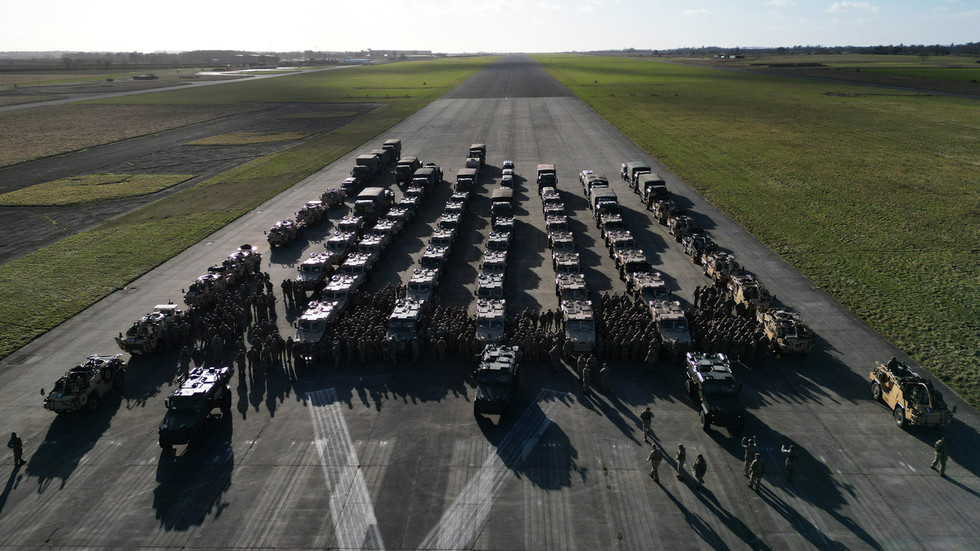
Steadfast Defender 2024, the bloc’s largest exercise in decades, is not only about military cohesion – it’s about selling war to the people

By Tarik Cyril Amar, a historian from Germany working at Koç University, Istanbul, on Russia, Ukraine, and Eastern Europe, the history of World War II, the cultural Cold War, and the politics of memory
By Tarik Cyril Amar, a historian from Germany working at Koç University, Istanbul, on Russia, Ukraine, and Eastern Europe, the history of World War II, the cultural Cold War, and the politics of memory
@tarikcyrilamartarikcyrilamar.substack.comtarikcyrilamar.com
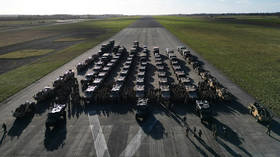
In this drone view, 2nd Battalion soldiers gather for a photo during a media visit to Kendrew Barracks on January 26, 2024 near Oakham, UK. © Leon Neal / Getty Images
NATO has launched its largest exercise since the Cold War ended. Steadfast Defender 2024 will last several months and involve about 90,000 troops, over 50 naval vessels, 1,100 ground vehicles (including at least 133 tanks and 533 armored troop carriers), and 80 aircraft of various kinds (planes, helicopters, and drones).
All 31 alliance members will participate, as will Sweden, which is in the process of joining. However, it’s not only a matter of numbers and duration. The massive event is also special for two more reasons, one fairly straightforward, the other more complicated and worthy of serious scrutiny.
In simple terms, the exercise will test regional defense plans, which NATO has not done since the end of the Cold War. A political benefit of returning to such detailed plans is that they provide leverage, in essence to Washington through NATO’s SACEUR office, to make European governments toe the line by committing troops, gear, and money. That is what The Economist pointed out, with satisfaction, at the time of last year’s Vilnius summit, when all of this was set in motion. Russian Deputy Foreign Minister Alexander Grushko’s observation is correct: The maneuver marks an “irrevocable return” of the alliance to Cold War mode, although, this, too, is only a new peak of a long period of aggressive development. Hence its no surprise either that the enemy targeted in this imaginary fight is Russia (even if appearing only as a “near-peer adversary” in Steadfast Defender’s official announcement).
The more complicated issue is that the exercise was preceded by a veritable onslaught of propaganda – or in up-to-date NATO-speak, cognitive warfare. One dead give-away that this has been deliberate is that the Western think tank/information-war platform the Institute for the Study of War (ISW) is already accusing Russia of engaging in “an information operation to misrepresent” the purely “defensive” Steadfast Defender.
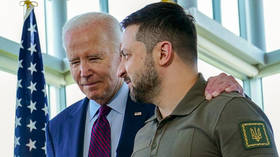
Read more
Remember the old rule of thumb: Usually, what the West accuses others of doing (for instance, genocide) is what it is doing itself.
In reality, NATO’s representatives and spin masters (official and in the guise of academics and think tank experts), politicians, and journalists were laying down a narrative barrage. Through official statements, interviews, and even Tom-Clancy-style fantasy scenarios, the Western public, especially in the EU, was made to imagine a scary – and near – future in which Moscow launches an invasion of European NATO member states. In this sense, “Steadfast Defender” is not merely a return to Cold War patterns but to the dark tone of its most virulent and dangerous phases, for instance, the early 1980s. Think of deep-frosted Cold War Hollywood classics such as “Firefox,” where Clint Eastwood steals a Soviet super-jet, or (the original) “Red Dawn,” where valiant American teenagers die heroically fending off evil Russians (and Cubans!) who had landed smack in the middle of America’s heartland. That kind of vibe.
It’s important to note that there is nothing self-evident about this propaganda blitz. NATO could conduct its big maneuver but make less of a fuss about it. Or accompany it with a different, less strident message, stressing due security diligence but refraining from detailed statements about Russia’s putative actions, as it were, tomorrow. Hence, this cognitive warfare offensive is deliberate. It was driven so far, that, after the initial wave attack of panic-mongering; even the formal figurehead of NATO, Jens Stoltenberg, got cold feet and felt compelled to remind everyone that there is “no direct threat.”
Let’s look at some examples of this remarkable propaganda offensive:
Not-yet-even-NATO member Sweden hurried to display exemplary verbal militancy: Its commander-in-chief General Micael Bydén urged his fellow Swedes to “prepare themselves mentally” for war, while Civil Defense Minister Carl-Oskar Bohlin stressed that “war could come to Sweden.” (It seems abandoning neutrality can make you more anxious.) Partly in response to Bydén, Germany’s minister of Defense Boris Pistorius then shared his wild guess that a Russian attack on a NATO country could occur within less than ten years.
In a press conference, the chairman of NATO’s military committee, Dutch admiral Rob Bauer, followed up by striking the same tone, albeit with more details. Bauer spoke about operations to shape the armed forces of the alliance for decades, a historically unprecedent degree of integration between NATO and national defense plans, and “resilience” to be cultivated by a “whole-of-society approach” to war as well as to preparing for war. All of this may sound grandiloquent. However, it would be a mistake not to take it seriously.
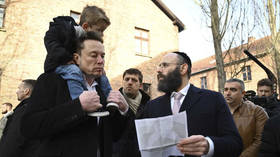
Read more
Such rhetoric signals that NATO is asserting itself as a background, yet dominant, political force, claiming, openly, all of society – across all those “unprecedently” integrated national governments and in peacetime – as its legitimate and permanent domain of action. Listening closely to Bauer’s imperious remarks, delivered in a tone of stern admonition, one can’t help but realize that Steadfast Defender 2024 is not merely about 2024, or about armies. It is meant to set political and social trajectories going forward. British generals have kept illustrating this side of the NATO propaganda offensive with repeated public musings about the need to introduce conscription and plan for a war against Russia.
The NATO war talk barrage is also not only about Russia. In a way, it is even more about the European NATO member states’ societies: a very clear reminder that their sovereignty is worth about as much as that of Greece when the “Troika” of Western overlords came knocking in 2015. None of this is surprising, of course: as a key tool of US control and European (self-)subjugation, NATO has always been a through-and-through imperialistic (in the technical, not polemical sense of the term) tool of US power projection and control in Europe.
Now, with the EU submitting to America to the point of serious self-harm, Bauer’s style of cajoling Europeans is only consistent. However, there is something remarkable about how brazenly NATO is displaying its will to power now, especially against the background of Donald Trump, a declared NATO foe, now the man most likely to win the American presidential elections at the end of this year: This could turn out to be NATO’s last hurrah.
For the mass media handling of the messaging offensive around Steadfast Defender 2024, let’s pick just two examples. The hyper-popular British tabloid The Sun was as blunt as you would expect, hammering its readers with the headline “GEARING UP FOR WAR: Nato calls up biggest global force in DECADES with 90,000 troops to begin ‘Steadfast Defender’ WW3 drills in days.” The rest of the article is as sensationalist as the title promises, including allegations of a Russian plan to attack on “Day X” as early as 2025.
More of a middle-class paper, the British Daily Mail was a tad more subtle, running a long, illustrated piece (with big red arrows on maps and all that) about the “Herculean war games.” Speculating how a Russian attack sometime in the next twenty years would unfold, the paper depicts Moscow’s massive future cyber-attacks, deep missile strikes, and AI-operated tanks on the move. (Clearly, the times of Westerners fantasizing about Russian soldiers storming forward with nothing but shovels are well and truly over.) Hapless retired US general Ben Hodges, who last spring still predicted a victorious Ukrainian counteroffensive, has moved on and is now prophesying about how Russia’s large coming strike against NATO in Europe will unfold.
What is all of this about?
The most frightening interpretation would be that NATO is dead set already on fighting Russia, come what may. That would be highly irrational and suicidal, but, then again, the West has not shown much rationality recently. Call it the “Baltic Kamikaze” or “Britain is Suicidally Bored” explanation of NATO behavior.
My guess: We are, luckily, not quite there yet. Don’t get me wrong: I am certain that there are nutcases in NATO (and the EU) who’d love to go to war, better yesterday than tomorrow. In that respect, rumors about Kaja Kallas, the would-be iron lady of Estonia being tapped for the de facto EU foreign ministry are very disturbing indeed. Yet what is more likely is a messy internal compromise: Where some already want war, others are playing for something else: Compensating for the West’s looming defeat in Ukraine.
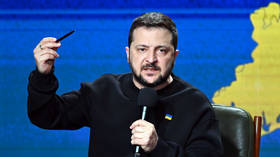
Read more
This is especially true since the West has made a catastrophic mistake. In treating Ukraine as almost a de facto NATO member, it has made sure that Kiev’s defeat by Russia will call into question the credibility of the alliance nearly as thoroughly as if an official NATO member had been vanquished: overstretch has consequences. Hence an urgent need now to make a lot of noise about how ready (“Seriously, really, we mean it this time!”) the alliance is about defending, especially NATO’s newer, eastern members.
But let’s zoom out for a moment: There’s an irony grand strategists like Admiral Bauer miss: If you want the “resilience” of a “whole-of-society approach,” then your society needs to be basically content, with its elites enjoying the ultimate reserve currency of politics – fundamental legitimacy, which sustains polities even when the ruled greatly disagree with the rulers. However, that kind of agreement grows only from trust, which is precisely what all too many citizens of the EU, and the US as well, do not have any more.
War – and preparing for war – remain essentially political activities, but not in the shortsighted manner NATO is applying now: Imbuing societies with a sense of a great outside threat can work, for a while. However, it will be futile in the not-so-long-run when two things happen: That outside threat fails to materialize, and, instead, the frustration that most people really feel in their own lives keeps coming from the inside. That’s, by the way, what killed the Soviet Union, which, as some NATO Cold War re-enactors may care to remember, died while armed to the teeth and having practiced “whole-of-society” defense indoctrination for decades.
The statements, views and opinions expressed in this column are solely those of the author and do not necessarily represent those of RT.




